A Road Trip Through Central Bulgaria's Balkan Mountains
Anita Isalska takes a white-knuckle drive through the Stara Planina (Balkan Mountains) of central Bulgaria, encountering battle-scarred valleys, breathtaking views, and baffling architecture along the way.
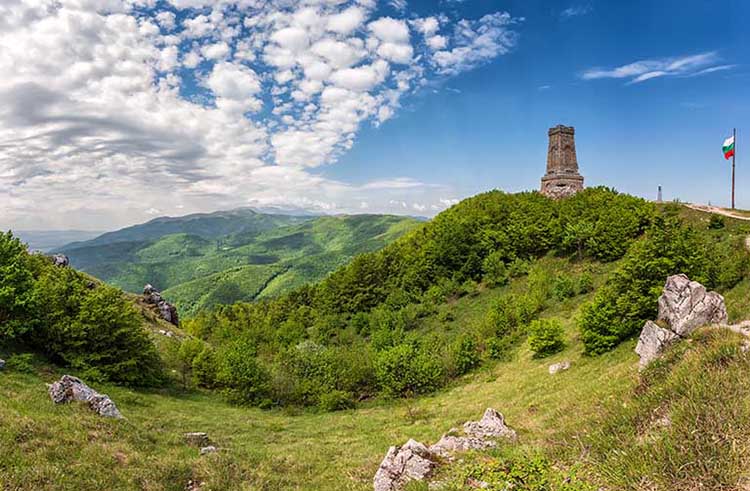 Photo © Getty Images / jk78
Photo © Getty Images / jk78
I tighten my grip on the wheel, steering my car along the serpentine road. Driving through the mountains of central Bulgaria is a test of nerve, but the views are worth every heart-stopping, hair-pin bend. Sawtooth peaks rise above valleys cloaked with forest. Village churches look lost in the wind-scoured hills.
I’m traveling from the fortress town of Veliko Tarnovo to Plovdiv, one of Europe’s oldest cities. The road between the two leads right through the Balkan Mountains. Reaching a height of 7,795ft (2,376m), the range extends west to east across the entire country, from the Serbian border to the Black Sea.
Here in Bulgaria’s mountainous heart, grand monuments and derelict buildings memorialize a history of pain and perseverance. Locals have urged me not to rush my drive, insisting that I take time to walk the ground where Bulgaria’s defining battles took place. And along these mysterious roads, they joked, I might even encounter a UFO…
- The Monument to Freedom on Shipka Pass
- Shipka village’s Russian church
- The abandoned Buzludzha “UFO”
- Trip Notes
The Monument to Freedom on Shipka Pass
After driving more than 37mi (60km) south from Veliko Tarnovo, the zig-zagging roads have almost lulled me into a trance. Arriving at Shipka Pass, my car putters over tarmac that has buckled during winter’s deep-freeze. Birch trees obscure the view on either side of the road, but the scenery is finally unveiled as I approach Mt Stoletov (4,360ft /1,329m). From here, I can see a panorama of the mountains where Bulgaria’s most significant battles were fought.
Pulling into a parking lot, I swing my legs out of the car and follow a stone walkway to the Monument to Freedom. The path leading to this 103ft (31.5m) turret of granite is almost like a pilgrimage route for Bulgarian people, who bring their children to learn about the Battles of Shipka Pass. Inside the monument is a museum recounting how Russian troops and Bulgarian volunteers repelled an Ottoman army more than five times their size.
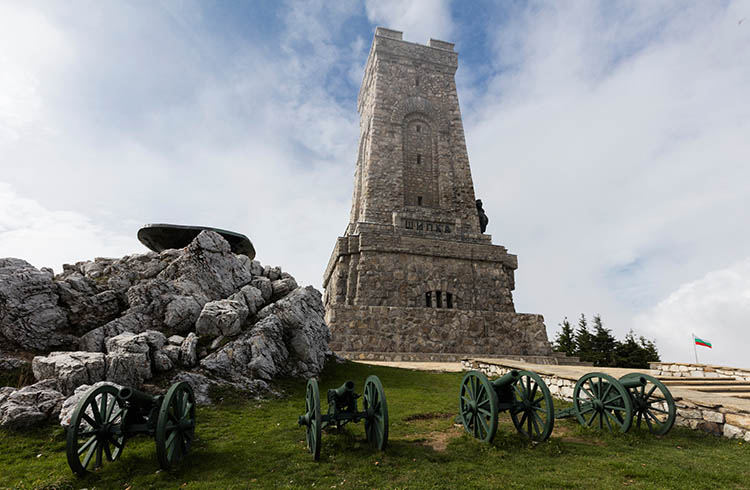
The victory was a pivotal moment in Russo-Turkish War of 1877-8, securing Bulgaria’s freedom from Ottoman control. Seen from the upper floor of the museum, where the battles are recounted in grisly detail, these mountains appear even more forbidding.
Shipka village’s Russian church
A meandering 9mi (15km) south is another monument to Russo-Bulgarian cooperation. The flamboyant Memorial Church in Shipka can be seen from miles around, its candy-colored spire rising incongruously above thick forest.
Stepping out of my car, I gaze up at this marvel of Moscow-style religious architecture. Five gold domes are gathered around its 174ft (53m) spire. With brilliant white arches, pink panels, and green tracery, the church reminds me of a gigantic wedding cake.
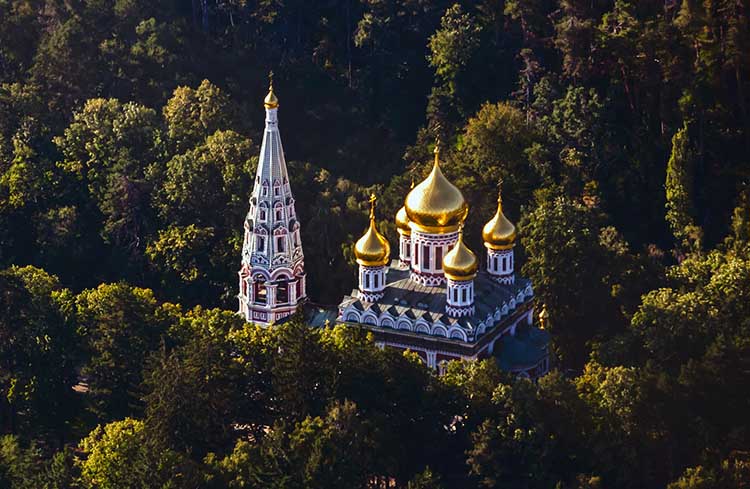
The church was consecrated on the 25th anniversary of the Battles of Shipka Pass. Marble plaques outside are etched with the names of soldiers who perished in the battles, and deep in the crypt are 17 sarcophagi, containing remains of the war dead. Reflecting this number, the spire contains 17 mammoth bells, which locals say were cast from spent ammunition cartridges. When I walk inside, the church seems to glow, from the burnished iconostasis up to its fresco-laden dome.
The abandoned Buzludzha “UFO”
The Battles of Shipka Pass freed Bulgaria from more than 500 years of Ottoman control. But a new mantle of oppression descended after the Second World War, when the country became a socialist republic under the Soviet-allied Bulgarian Communist Party. Brutalist architecture from this period still litters the country.
As I drive southeast out of Shipka, my car groans as I switchback up the mountain. Before long, the road flattens out, and at the end of this long runway, a saucer-shaped monument looms from a 4,725ft (1,440m) summit.
This is the “Buzludzha UFO,” a former assembly hall and one of the region’s most controversial sights. Inspiring its nickname, this dome-shaped building looks as though it was plucked out of a sci-fi movie.
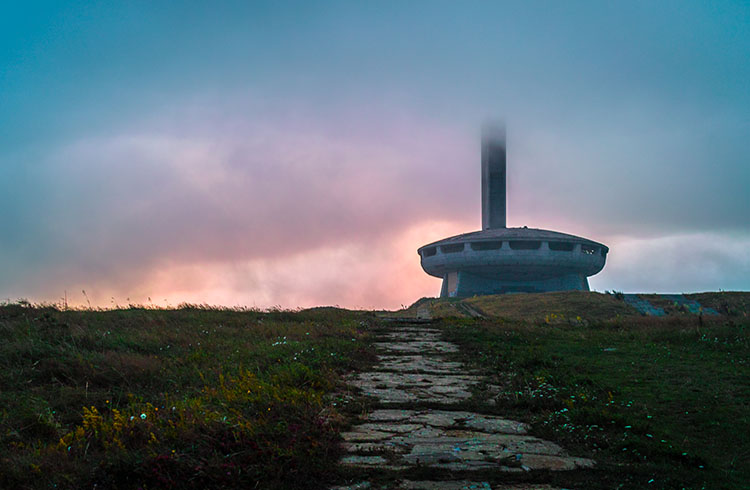
Inside, mosaics of long-gone socialist party leaders sparkle from the walls, some of them entirely chipped away. But the dangerously dilapidated building is often bolted shut, and local authorities warn tourists against going inside.
Many older Bulgarians would rather see Buzludzha Monument demolished than winking from the top of a mountain. Younger Bulgarians, however, are often captivated by the contrast between the building’s bombastic intent and its present state of disintegration. What better way to remember the fall of a hated era than to watch its emblem fall into spectacular decay?
As I continue my drive towards Plovdiv, there’s more history flying past my window. Tombs of Thracian warriors are secreted inside these hills. Around the town of Kazanlak, a sweet scent puffs out from distilleries that still use centuries-old methods to infuse rose water. One road trip isn’t nearly enough to make sense of Bulgaria’s storied past.
Trip Notes
Getting to Bulgaria’s Central Mountains
The Bulgarian capital of Sofia, with air and rail connections across Europe, is a common starting point for road trips into the mountains. Rent a car in Sofia or jump on a bus to Veliko Tarnovo and get a vehicle there. Plovdiv is served by direct flights from London.
Where to stay
In Veliko Tarnovo, the most charming accommodation is in the historic quarter, which is nestled in the bends of the River Yantra; some options have river-facing balconies. West of here are numerous three-star hotels (a few with spas), and there are homeshare options everywhere. To prolong the drive, stop halfway in Shipka, where you’ll find a couple of simple, good-value B&Bs and inns geared towards hikers. At journey’s end, Plovdiv has dozens of options, including hotels and hostels in faithfully restored 19th-century townhouses in the Old Town. The adjacent Kapana neighborhood has apartments and homeshares, while there are several modern hotels in the southern part of Plovdiv Center.
Related articles
Simple and flexible travel insurance
You can buy at home or while traveling, and claim online from anywhere in the world. With 150+ adventure activities covered and 24/7 emergency assistance.
Get a quote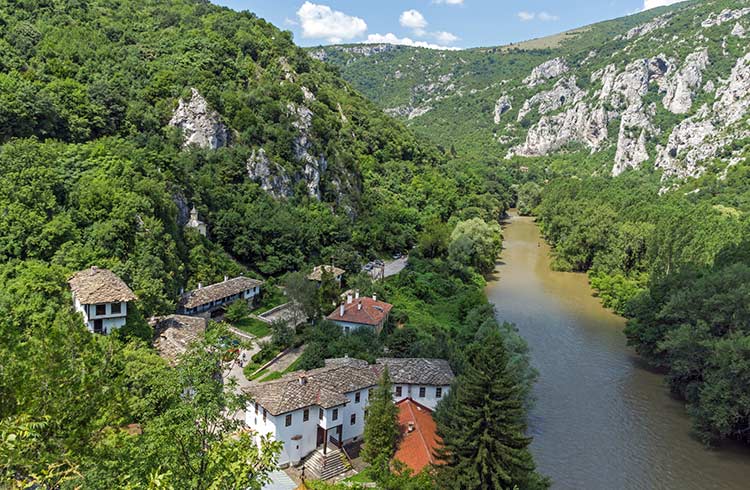

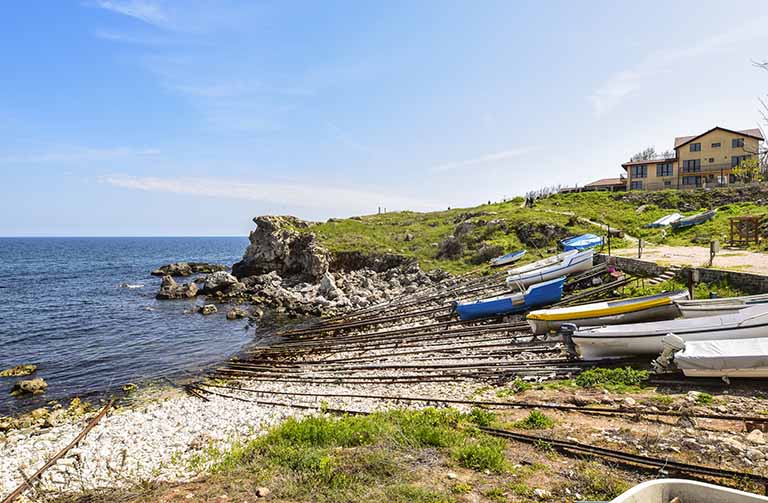
No Comments